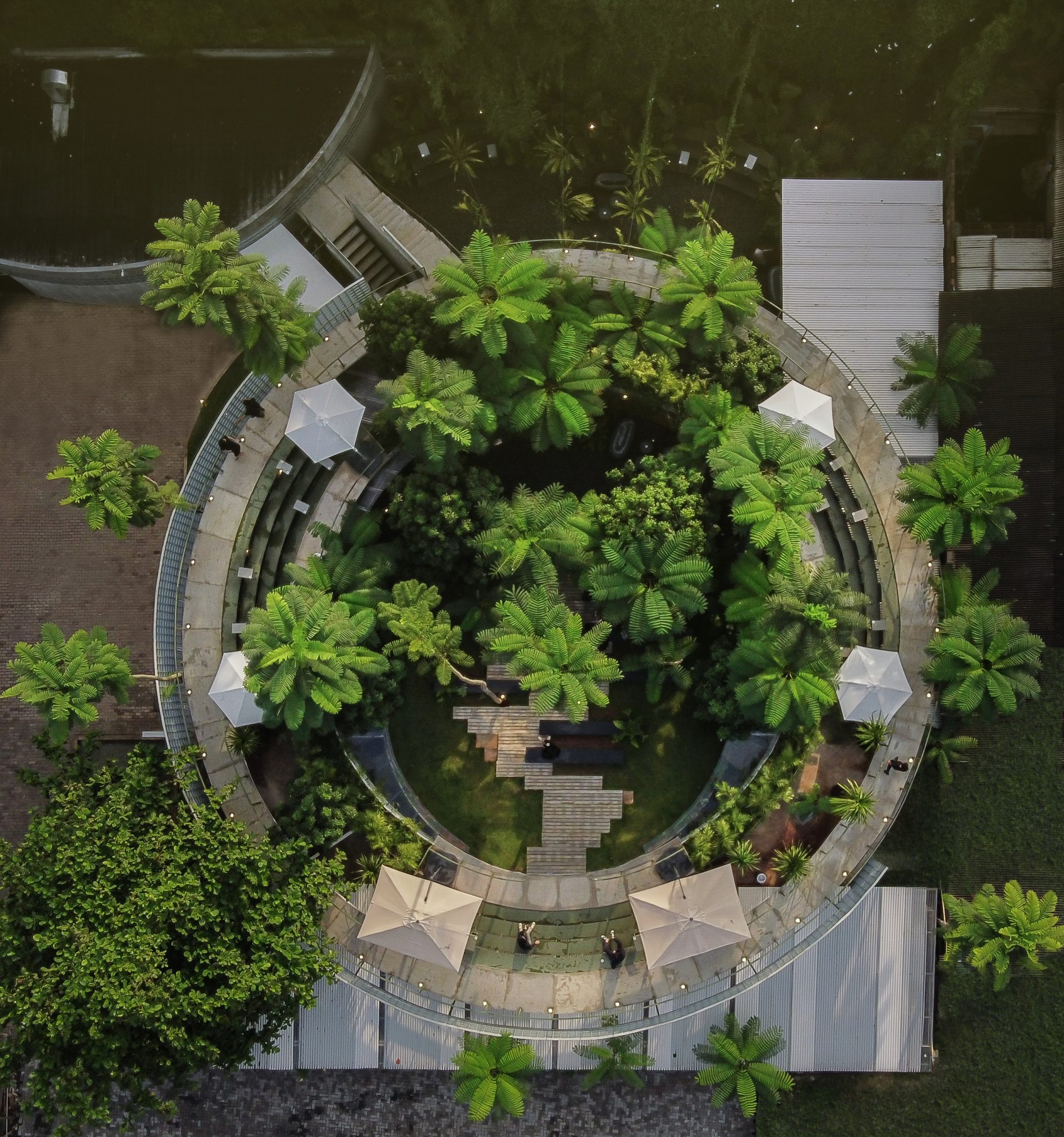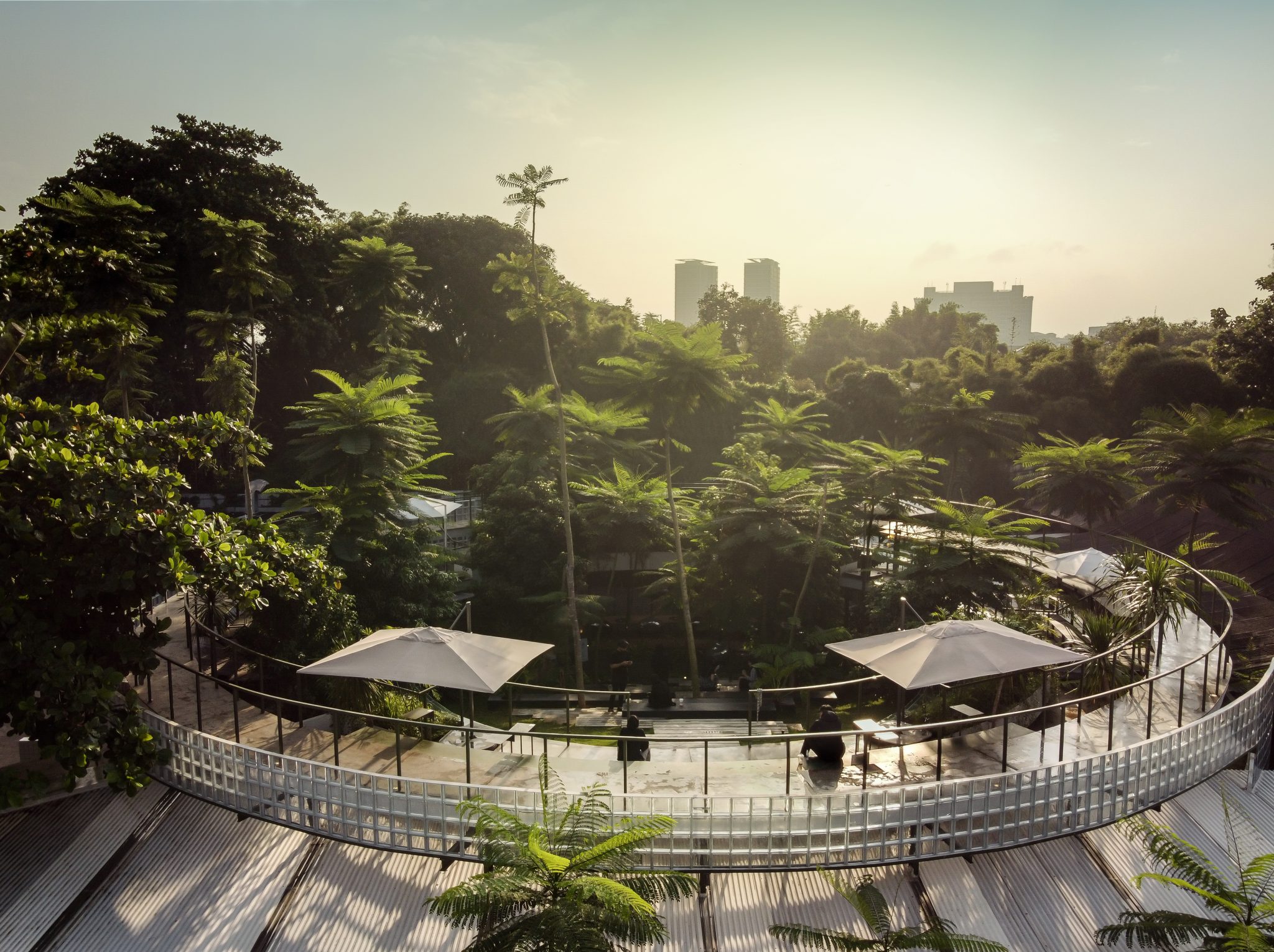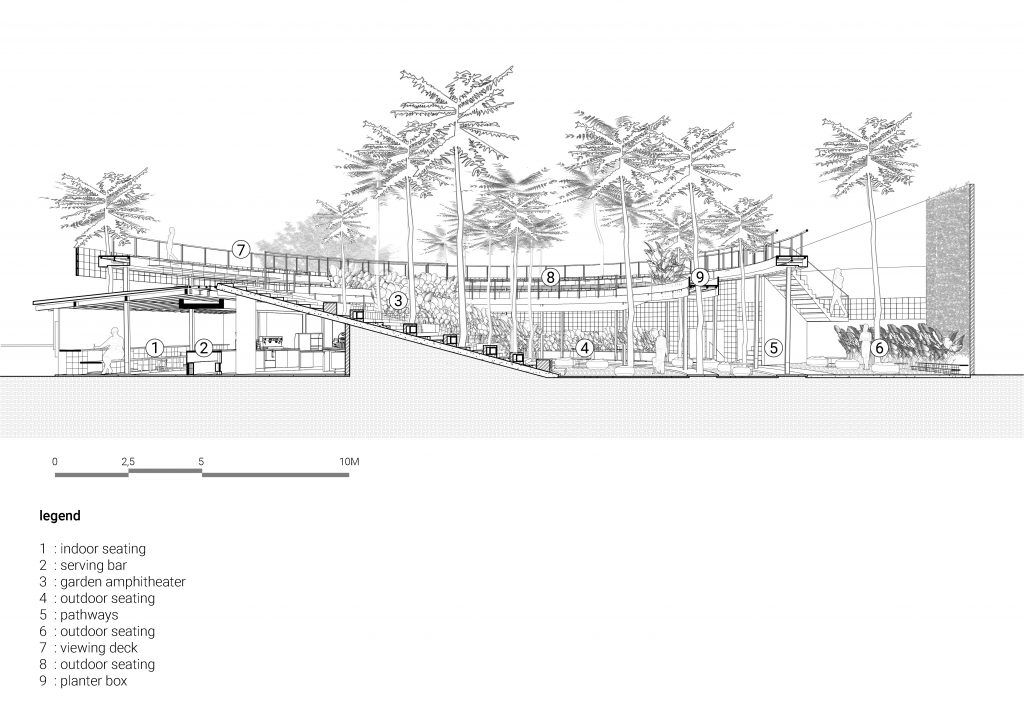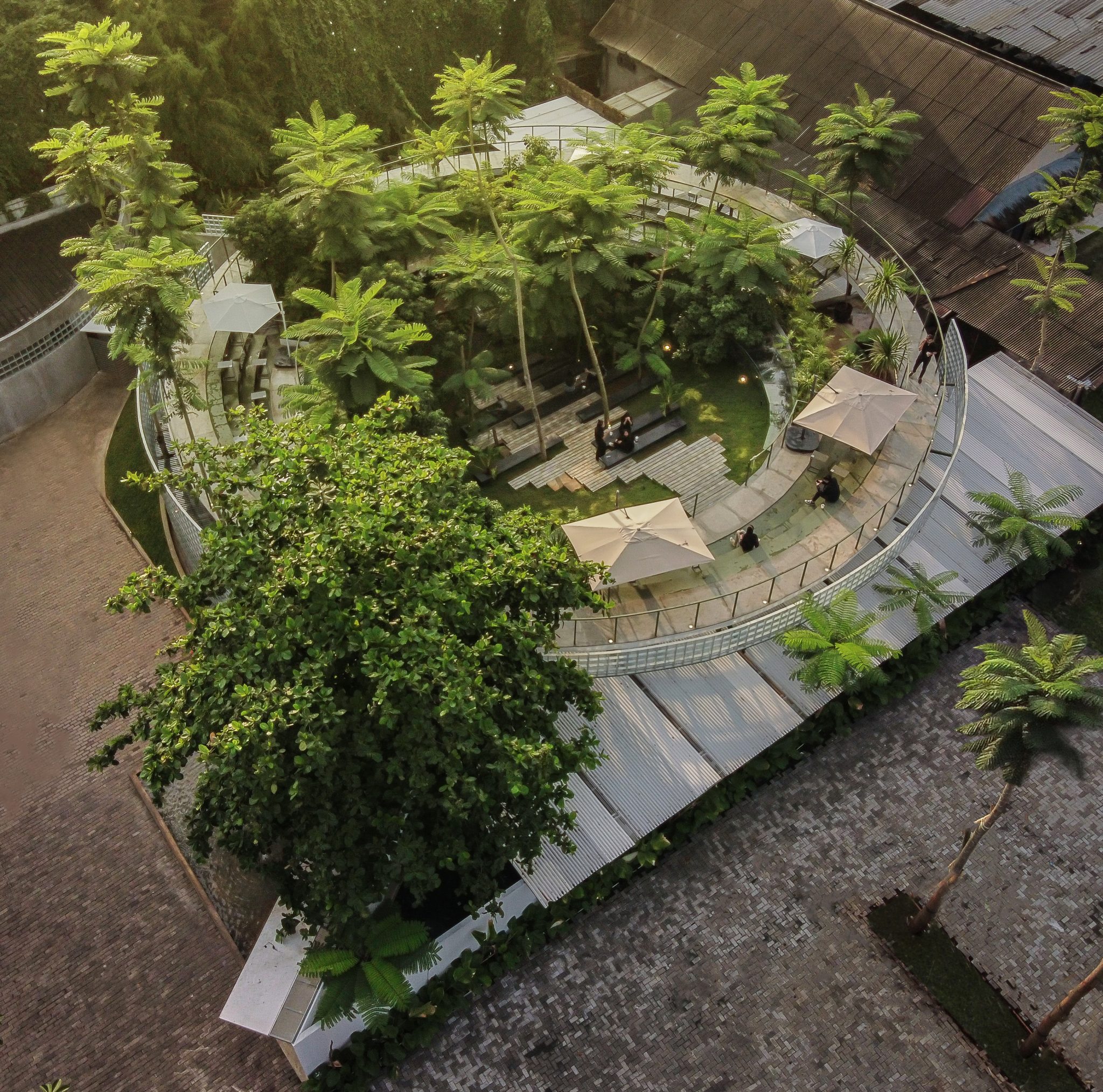





Ring Garden
Ring Garden Café called Tanatap is a small prototype of a multi-leveled greenspace with dynamic platforms that rise and fall to create a walkable roofscape. The structure will be connected to create a series of floating amphitheaters surrounding green spaces and tropical outdoor activities in the middle.
Started with the question, what if functional spaces and the very definition of the building only acted as an envelope of an open garden. The design was to demonstrate a disappearing indoor space, hidden within a simple multi-leveled garden. Spaces that were created became a sequential space and were not an initial space. At the heart of our project is the idea of playful togetherness. We want this to be a refreshing and dynamic new civic space that is sustainable – businesswise in developing country cities like Jakarta, where government-run public space is unreliable.
The architects developed three strategies to create a functional integrated cafe space within nature. The first approach is to connect all the existing trees as means of circulation for the visitor. Secondly, stringing all the structures to create an underground intimate scale experience in the main entrance. Next, is to create a contrast experience in scale, color, the density of nature, and the amount of natural sunlight penetration hidden in conceal doors in both wings in the lobby/bar area. This dynamic intervention into the existing landscape ensures that the new landscape intervention performs aesthetically in harmony with the garden as a whole.
It was designed as experimental programming to see and learn how users will behave once the architect restructures the hierarchy of space. RAD+ar uses this project to learn more about visitor behavior in defining spaces they don’t understand, that is why most of the furniture in this café is undefined, blended with the hardscape and feature of the landscape, therefore acting as an experiment of how visitor/user defines their own meaning of comfort in using this furniture. It was seen as a social experiment on how people keep redefining their sense of third space, in open space/garden and keep changing it to keep up with the crowds at different times of the day.
As visitors enter the Ring Garden, they are surrounded pathway bridge that connects 2 existing trees that blurs the definition of indoor and outdoor space. Upon entering the spaces, they were teased by what appears to be sliced skylight and people activities in the garden above. Concentric space with a coffee bar in the middle, space branches into 2 spaces behind the concealed door that gradually become less intimate and flooded with more natural light penetrating. Both spaces are leading to the main spacious multi-leveled garden area as the ending and indirectly persuading visitors to enjoy more of what a tropical garden could be.
In the upper level, the whole ring garden can be seen as a transitional space between the city and the landscape. Looking at the sculpture from further away, it punctures a skyline-like image of a city onto the horizon, but when entering the square, the color and light, invite the visitors in a sensual way into the natural landscape of the Ring Garden.
Glass block is chosen as the main materials for the envelope, as it is blurring the definition of whether or not this is considered a building / a garden metaphorically, buffering privacy of customer inside, while offering plenty of natural light from inside. The structure of the walls is integrated within the glass block to ensure its lightness, giving a sensation of very heavy materials were floating above the garden and slowly scattered along with the experience within.






















